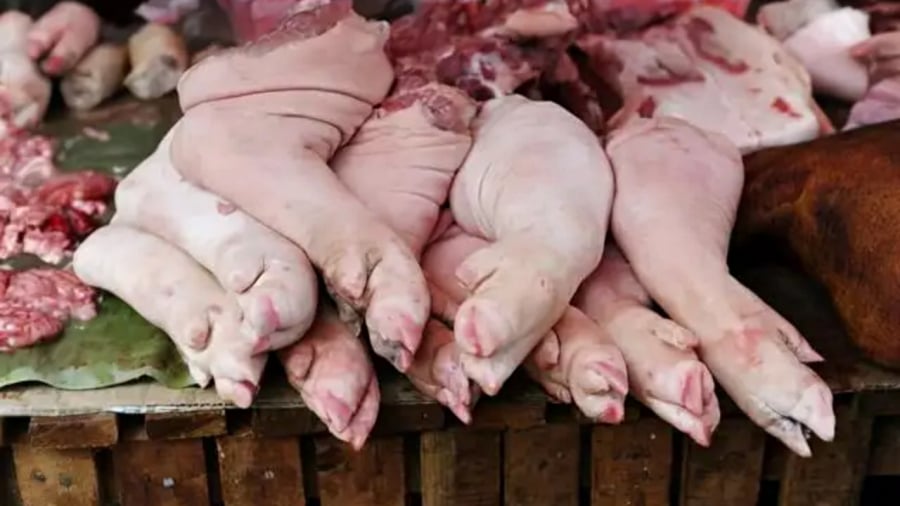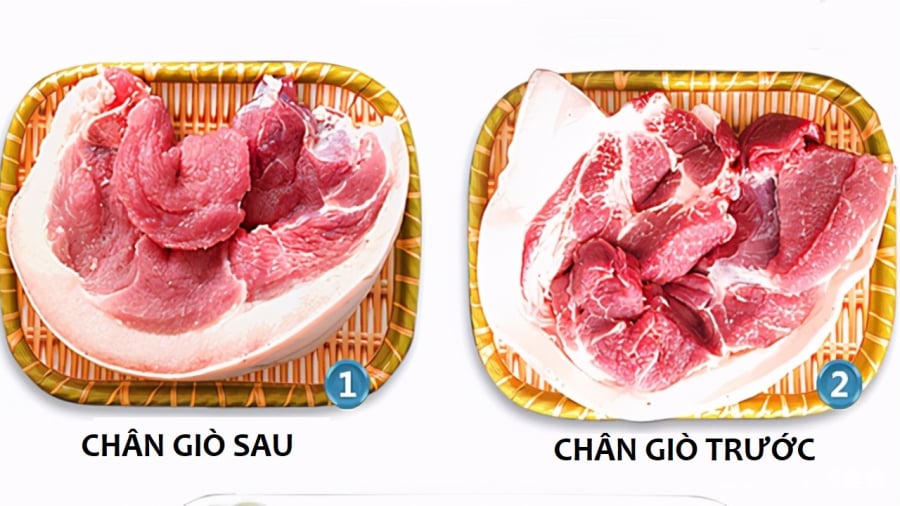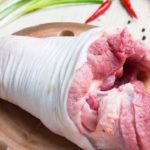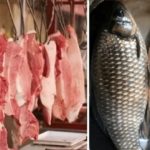Pork hocks, or pig’s trotters, are considered one of the most delicious cuts of pork, offering a range of culinary possibilities. Whether boiled, stewed, or braised, this cut of meat is both tender and juicy, with a perfect balance of meat and fat.
A pig has four trotters, which can be divided into front and rear hocks. But what are the differences between these two cuts, and which is the tastier option?
**Front or Rear Pork Hocks: Which is Tastier?**
The front trotters of a pig tend to be more active, resulting in tougher meat with more tendons. Due to the increased movement, the front hocks have thinner and lesser meat but a higher concentration of tendons. Flavor-wise, the front hocks offer a lighter, sweeter, and slightly crispier taste.
Front hock meat is ideal for boiling, stewing, grilling, and making ‘giả cầy’ (a traditional Vietnamese dish simulating dog meat).
In contrast, the rear hocks, seeing less action, have less connective tissue and a higher meat content. The fat is more evenly distributed, and the leaner meat makes it perfect for stir-frying, stewing, or mincing.

Visible differences between front and rear pork hocks.
While there are some distinctions, the fundamental difference lies in the amount of connective tissue and meat content. Front hocks have more connective tissue and thinner meat, while rear hocks boast a higher meat yield and less connective tissue.
**Choosing the Right Pork Hocks for Your Dish**
Depending on your preference and the recipe you wish to create, you can opt for either the front or rear hocks.
**General Tips for Buying Pork Hocks and Other Pork Cuts**
When purchasing pork hocks or any other pork cut, always look for firm meat. Fresh, high-quality pork should have a soft and moist texture but not feel slimy. The surface should be dry, and the meat should be resilient when pressed. Look for a vibrant pinkish-red color and an even grain.
Avoid meat with abnormal colors, a slippery feel, reduced resilience, or an unpleasant odor.

Look for vibrant colors and good resilience when buying pork hocks.
Be cautious if you notice small, rice-like grains on the meat, as this could indicate the presence of parasitic cysts.
Super lean pork tends to have a stronger tangy smell, and if the pig has been fed growth promoters, you may notice fluid retention in the meat fibers, with lumps of lean meat forming nodules. When cutting the meat, you might also observe the discharge of yellow liquid.
There you have it! A guide to help you navigate the world of pork hocks and make informed choices when purchasing this delicious cut of meat.
The Ultimate Guide to Choosing the Perfect Ribs and Pork Hock: A Meat Connoisseur’s Dream
Pork ribs and trotters are beloved ingredients in many cuisines across the globe. They offer a unique texture and flavor that has captured the hearts of many food enthusiasts. With their versatile nature, these meaty treats can be transformed into an array of mouth-watering dishes, from sticky, finger-licking barbecue ribs to crispy, golden-brown trotters that crackle with every bite. Their popularity is undeniable, with many chefs and home cooks alike embracing their potential to create culinary masterpieces. Whether it’s a cozy family dinner or a lavish restaurant menu, pork ribs and trotters always deliver a satisfying and memorable dining experience.



































